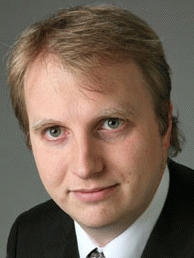Approximate (Trans-Precision) Computing Without Re-Inventing the Wheel
Content of the lecture:
Approximate computing has recently emerged as a major topic of interest and even a paradigm-shift in the design automation community. However, we often forget that simplifying algorithms and relaxing accuracy requirements for better implementations is also an established art, known as VLSI signal processing with a significant body of prior works. Nevertheless, the recent limitations of technology scaling have brought the concept of deviating from well defined algorithms and accurate floating-point implementations to other research communities (such as computer science, design automation, or computer architecture) and as always, when communities meet, it is important to discover where existing concepts can be re-used or extended and where new potential for innovation exists. In this tutorial, I will review the different flavors of “approximate computing” and the different notions of “approximation”. I will summarize well known tricks and concepts as well as entirely new concepts and opportunities that can be merged with concepts that are well understood in other research communities to provide new avenues to push the performance-complexity pareto-front to better systems and designs. I will address aspects from algorithms to architectures (both dedicated as well as SW programmable) to circuit implementation and test to identify issues and describe potential solutions (both old, but not always well known and new).
Teacher: Prof. Andreas Burg
 Andreas Burg received his Diploma and his PhD degrees in 2000 and in 2006, respectively, both from the ETH Zurich. After his PhD, he co-founded Celestrius, a fabless semiconductor company in the area of circuits and systems for wireless communications. After two years as SNF Assistant Professor at ETH Zurich from 2009-2010, he joined the EPFL, where he is an Associate Professor since June 2018, heading the Telecommunications Circuits Lab. His research interests are in VLSI circuits and systems, in VLSI signal processing and in Communications. He is a member of IEEE and contributes actively to conferences and journals. In his career, he was involved in the tapeout of more than 40 ASICs and he published more than 250 papers.
Andreas Burg received his Diploma and his PhD degrees in 2000 and in 2006, respectively, both from the ETH Zurich. After his PhD, he co-founded Celestrius, a fabless semiconductor company in the area of circuits and systems for wireless communications. After two years as SNF Assistant Professor at ETH Zurich from 2009-2010, he joined the EPFL, where he is an Associate Professor since June 2018, heading the Telecommunications Circuits Lab. His research interests are in VLSI circuits and systems, in VLSI signal processing and in Communications. He is a member of IEEE and contributes actively to conferences and journals. In his career, he was involved in the tapeout of more than 40 ASICs and he published more than 250 papers.
